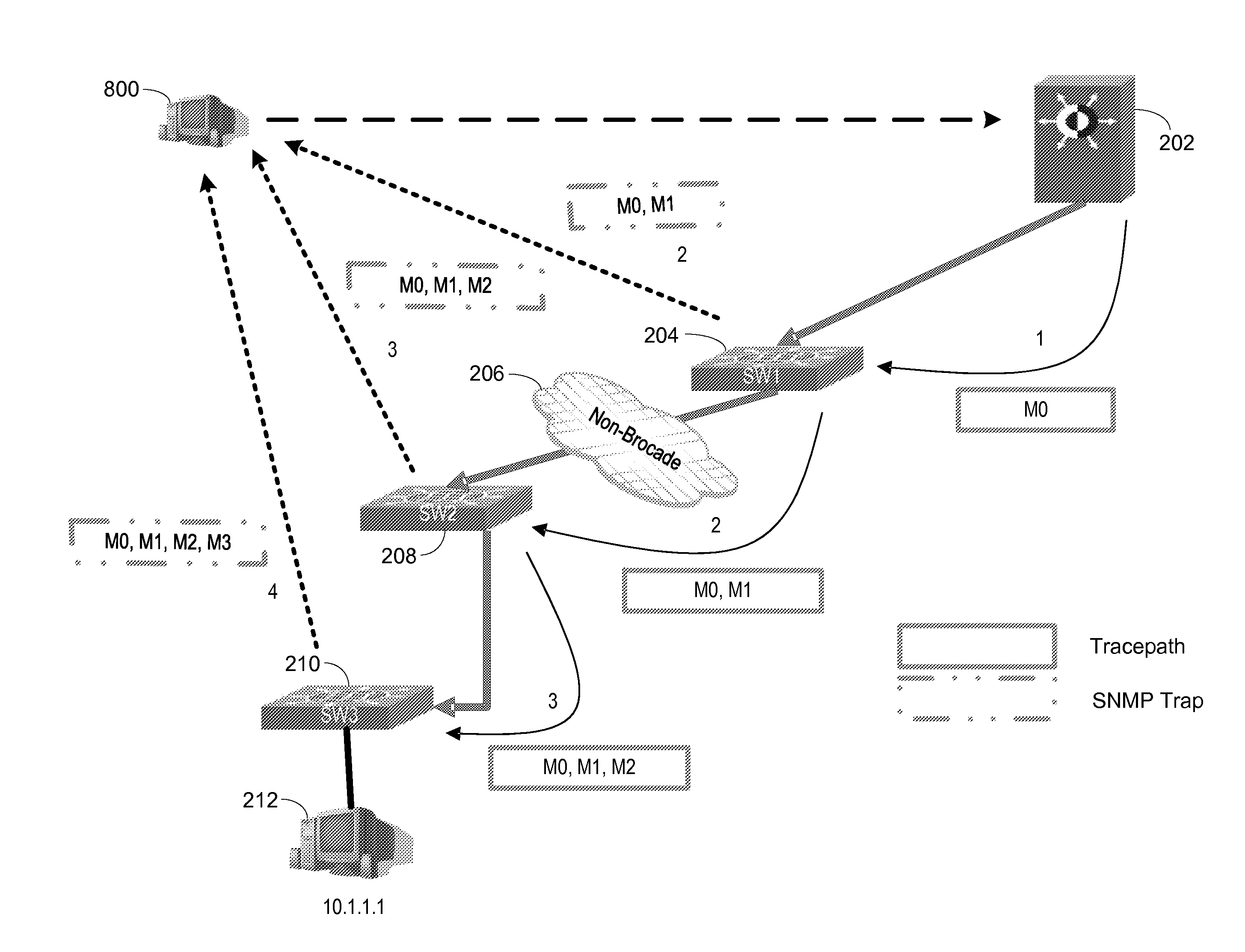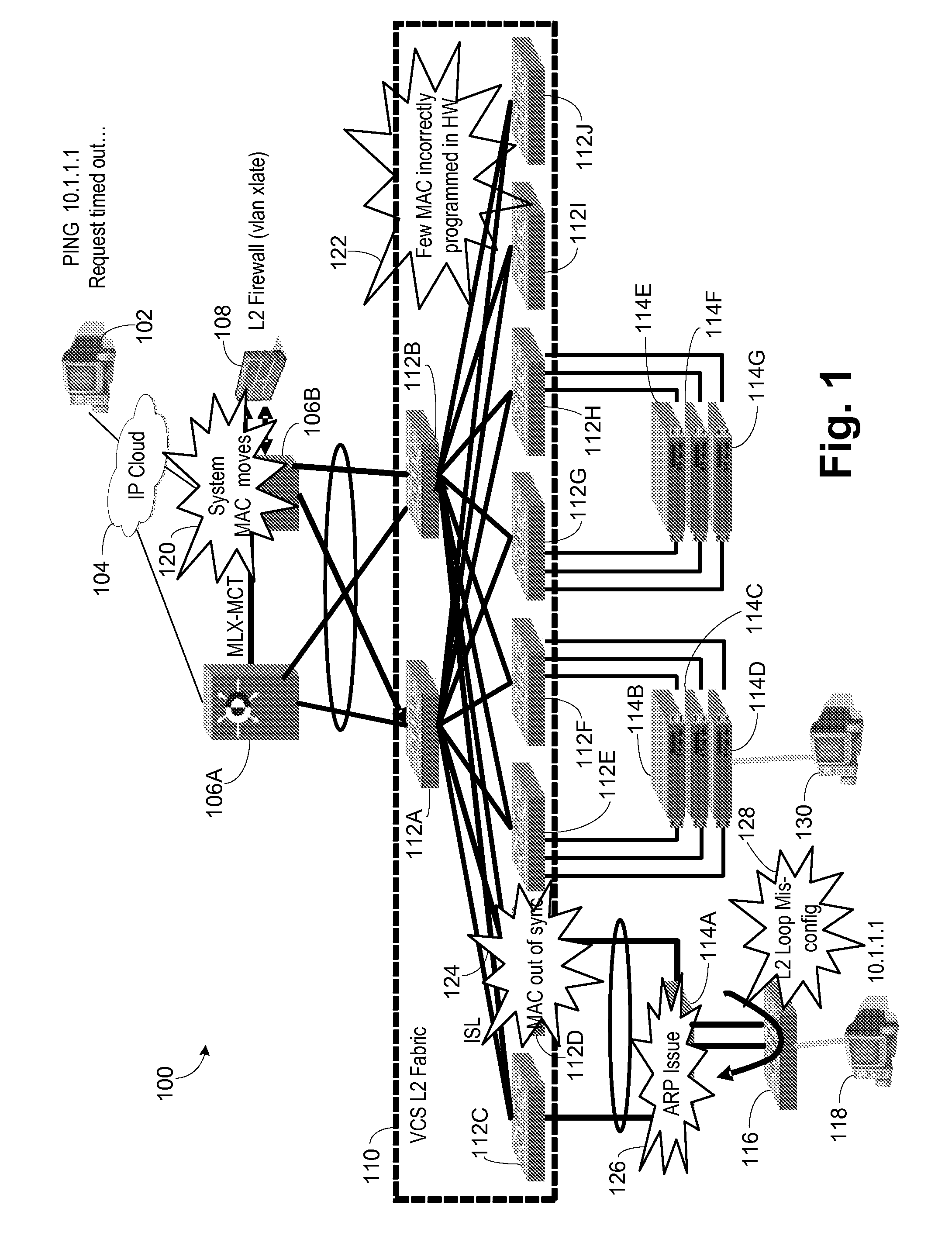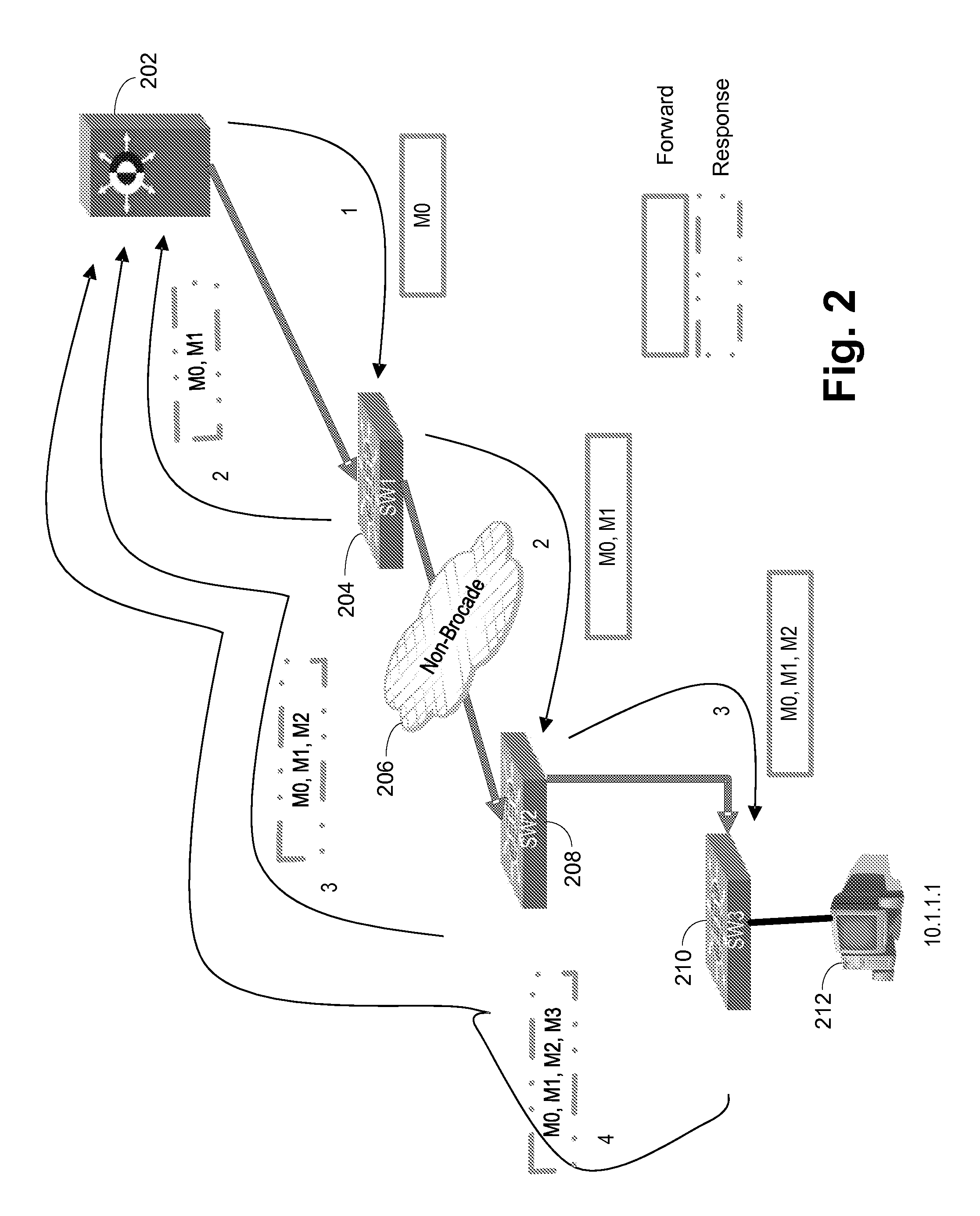Packet tracing through control and data plane operations using SNMP trap commands
a packet tracing and control technology, applied in the field of network tracing paths, can solve the problems of customer escalating problems to vendors, packet loss, cumbersome and impractical debugging, etc., and achieve the effect of flexible system administrator and easy integration
- Summary
- Abstract
- Description
- Claims
- Application Information
AI Technical Summary
Benefits of technology
Problems solved by technology
Method used
Image
Examples
Embodiment Construction
[0039]Referring now to FIG. 1, an exemplary network 100 is shown. An external workstation 102 is connected to an IP cloud 104, such as the Internet, which in turn is connected to routers 106A, 106B. The routers could be MLX routers from Brocade Communications Systems, Inc. (Brocade). A Layer 2 firewall 108 performs VLAN translations and other firewall functions and is connected to the routers 106A, 106B. The routers 106A, 106B are connected to a Layer 2 fabric no, such as the VCS fabric from Brocade. The Layer 2 fabric no is formed by a series of switches 112A-J, example switches being VDX switches from Brocade. A series of stackable edge switches 114A-G are illustrated as being connected to the Layer 2 fabric no. Example stackable edge switches are FCX switches from Brocade. Another switch 116 is connected to switch 114A in the example to provide a switch connected to a local workstation 118.
[0040]In the illustrated embodiment external workstation 102 pings the local workstation 11...
PUM
 Login to View More
Login to View More Abstract
Description
Claims
Application Information
 Login to View More
Login to View More - R&D
- Intellectual Property
- Life Sciences
- Materials
- Tech Scout
- Unparalleled Data Quality
- Higher Quality Content
- 60% Fewer Hallucinations
Browse by: Latest US Patents, China's latest patents, Technical Efficacy Thesaurus, Application Domain, Technology Topic, Popular Technical Reports.
© 2025 PatSnap. All rights reserved.Legal|Privacy policy|Modern Slavery Act Transparency Statement|Sitemap|About US| Contact US: help@patsnap.com



